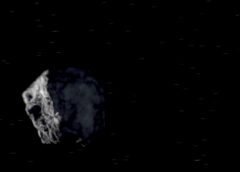Back in October, astronomers tested the TC4 Observation Campaign by using a real Near Earth Asteroid to practice global response to a potential threat.
There are potentially millions of chunks of flying debris of various sizes in space that constantly sweep past Earth.
Astronomers know that there no large, continent-destroying asteroids that are on a collision course with our planet, at least in the foreseeable future.
The danger will come from much smaller asteroids, the kind that can do significant damage to cities. A prime example is the one that exploded in Russia back in February 2013, that created a shockwave that damaged over 7,000 buildings and broke windows in the city of Chelyabinsk. The incident also injured 1,500 people.
These smaller asteroids are harder to track. What would happen if we actually found one coming our way?
That’s where NASA’s Planetary Defense Coordination Office steps in… They launched a initiative back in April called the TC4 Observation Campaign.
According to NASA:
The exercise commenced in earnest in late July, when the European Southern Observatory’s Very Large Telescope recovered the asteroid. The finale was a close approach to Earth in mid-October. The goal: to recover, track and characterize a real asteroid as a potential impactor — and to test the International Asteroid Warning Network for hazardous asteroid observations, modeling, prediction and communication.
The target of the exercise was asteroid 2012 TC4 — a small asteroid originally estimated to be between 30 and 100 feet (10 and 30 meters) in size, which was known to be on a very close approach to Earth. On October 12, TC4 safely passed Earth at a distance of only about 27,200 miles (43,780 km) above Earth’s surface. In the months leading up to the flyby, astronomers from the U.S., Canada, Colombia, Germany, Israel, Italy, Japan, the Netherlands, Russia and South Africa all tracked TC4 from ground- and space-based telescopes to study its orbit, shape, rotation and composition.
The European Space Agency, one of NASA’s partners in this project stated that the campaign was a success and that it was an excellent test of a real threat case. They were all well prepared. The communication and the openness of the community was fantastic.
Link: http://2012tc4.astro.umd.edu
https://www.jpl.nasa.gov/news/news.php?feature=6994

Rod is a blogger, writer, filmmaker, photographer, daydreamer who likes to cook. Rod produces and directs the web series, CUPIC: Diary of an Investigator. He is also the editor, producer and administrator of STM Daily News, a part of the TNC Network.


